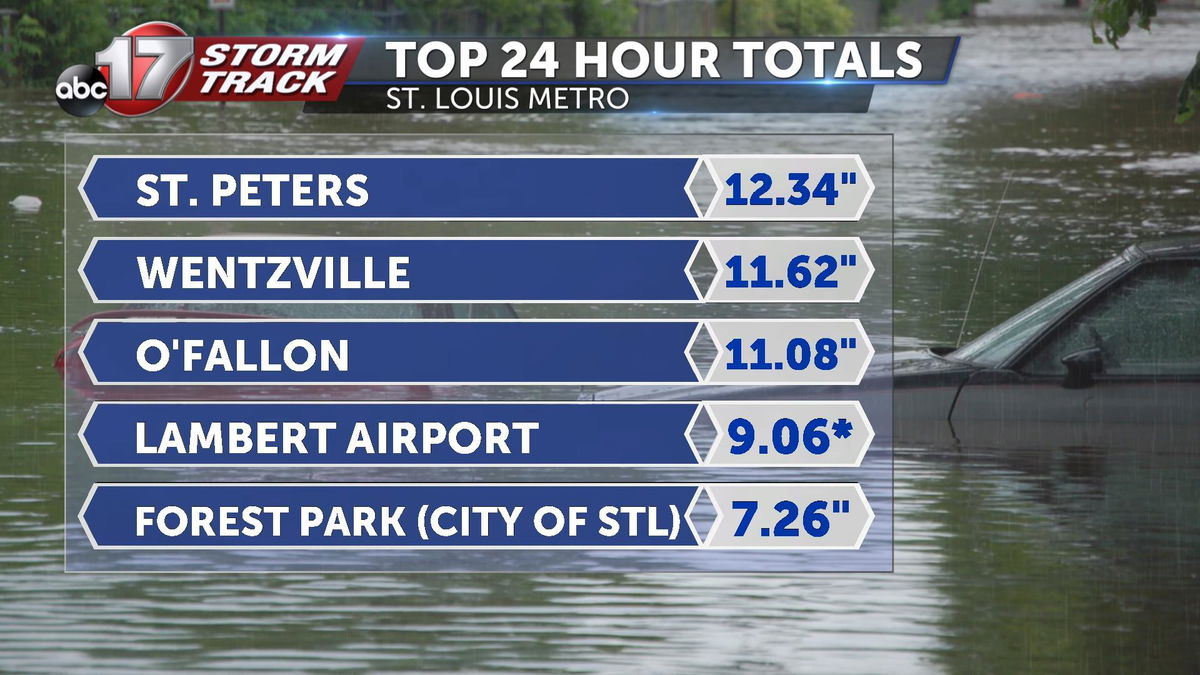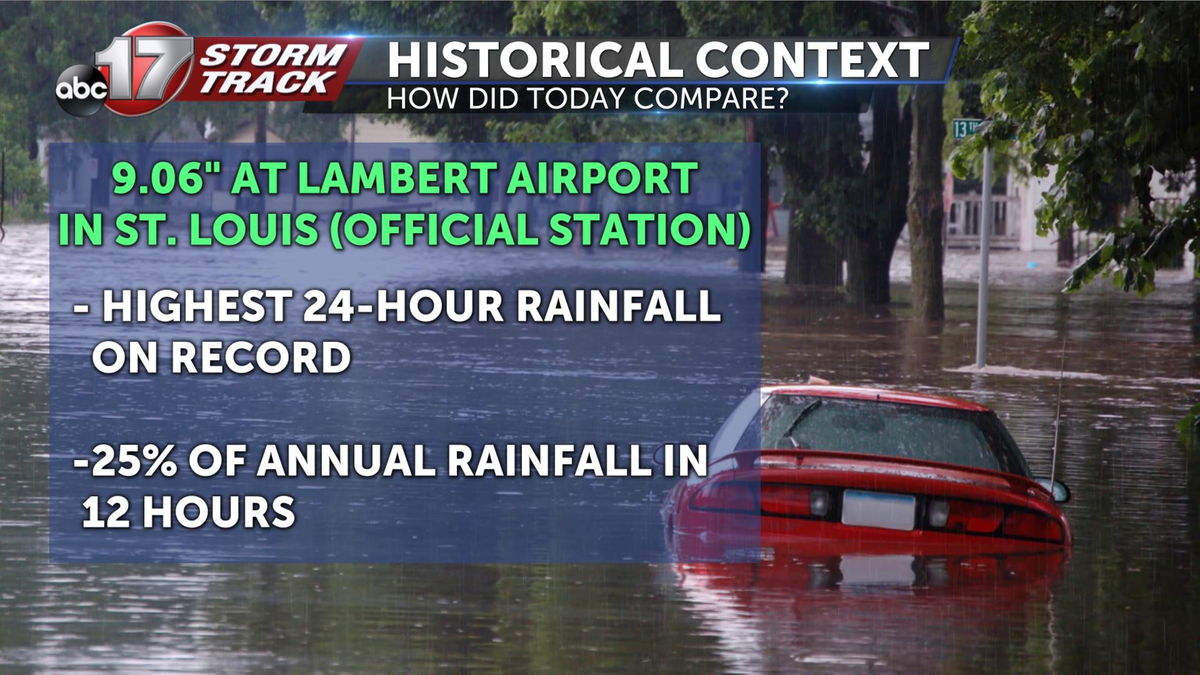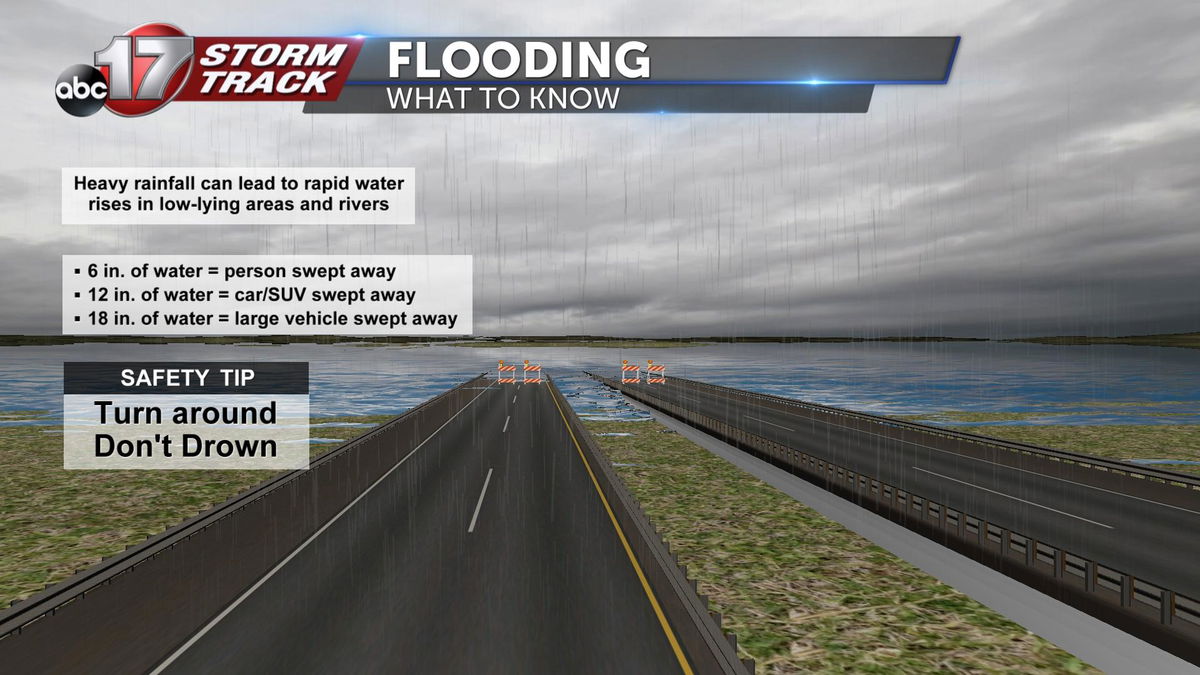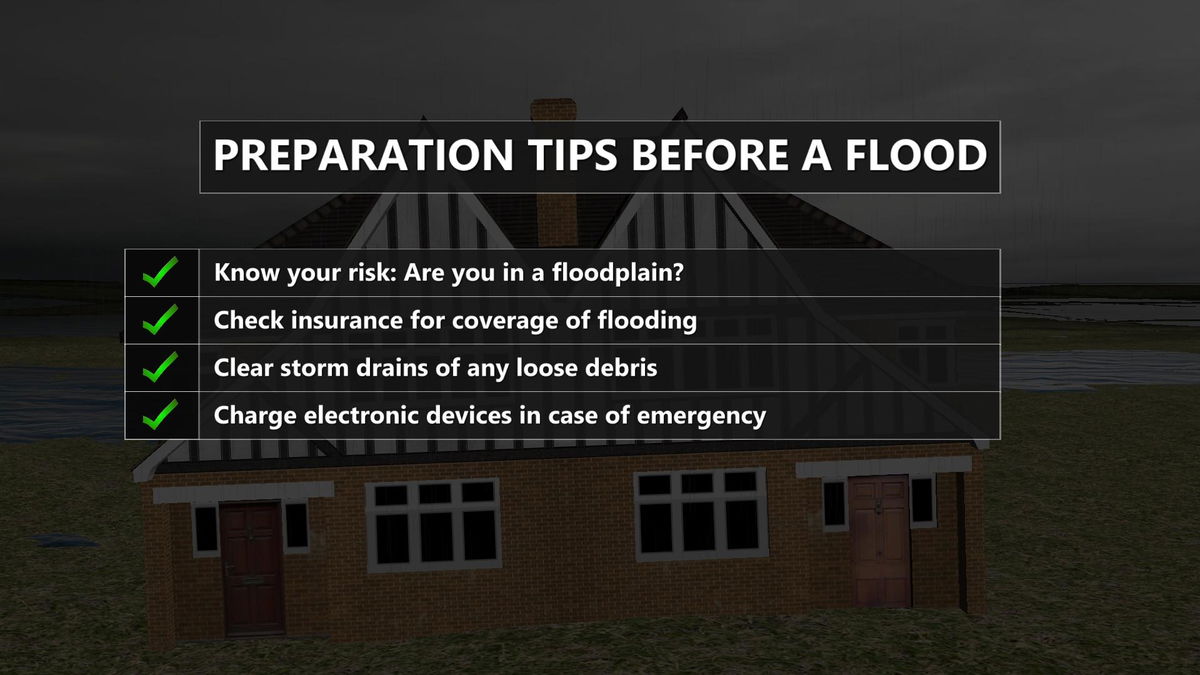Flash flooding across Missouri and how to stay safe
Showers and storms have calmed down this afternoon across Mid-Missouri, but more stronger downpours and storms are expected once again overnight. When it comes to driving in flash floods, it really doesn’t take much to sweep a car off of its path and leave you stranded.

Strong and prolonged showers and storms waned down across Mid-Missouri resulting in some areas seeing over 7" of rainfall such as Mexico Missouri in Audrain county leading many road closers.

The story was even more grim in St. Louis as around 70 rescues were made due to this same stationary front caused rainfall totals in some areas to hit just over 1' of rainfall. There was one recorded drowning associated with these showers to the east of Mid-Missouri.

At the St. Louis automated weather station at the Lambert airport, just over 9" were measured breaking the 24-hour standing record of rainfall in a day. To put into comparison just how substantial this event was, St. Louis recorded 25% of their annual rainfall they typically see in a day in just 12 hours.

All it takes is six inches of water to swim first in a way kind of like what you're seeing with this stream located right behind me fast moving water can take your feet out and leave you stranded
At one foot of water depth, many cars can be swept off of roadways causing accidents that can in turn create more dangerous situations for first responders. And at 18” large trucks and SUV’s can fall victim to the same fate.
The most important rule to remember is to “turn around, don’t drown.” When seeing water pooling or flowing over roadways, the best option is to turn around and look for alternate routes.

When it comes to floods at your home, there are a few precautions you can check into. The first is to find out if you are in a floodplain so you can understand your own risks. This will then factor in your needed coverage for flood insurance to make sure you are covered under your company’s restrictions. If your home is next to a drainage area, make sure to clear and debris to allow for the proper water flow into designated water management systems. Finally, if the worst case scenario does come true, you’ll want to have fully charged electronic devices such as your phone to contact help.
